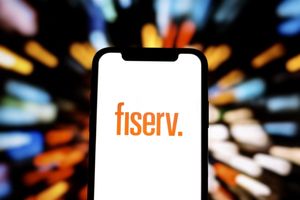The 4 Most Common Cyber Threats and How to Stop Them
Cybersecurity is a growing concern. A Hiscox's Cyber Readiness Report for 2021 showed that 43% of firms had experienced a cyberattack in the last year, up from 38% the previous year. As more business moves online, the risk increases, but you can make it harder for cyberthieves to steal your data.
Modern cybersecurity technology paired with effective security awareness training can reduce attacks that result from human error or sophisticated tech.
Ransomware
Ransomware is software that encrypts your data so you can't access it without paying the attacker to unlock it. The software gets downloaded to your computer when you click on a link in the attacker's email.
Ways to protect yourself from ransomware include:
Security awareness training
Security awareness training teaches staff not to click links in fraudulent emails. Attackers may impersonate a real business by using its logo, but the email address won't use the company's domain name. For example, if an email claims to be coming from Amazon, but the originating email address does not end in amazon.com, it's probably fake.
Email attachment sandboxing
Automated sandboxing of email attachments and opening links in an isolated browser can prevent ransomware and malware from reaching your system, even when a user clicks on a bad actor's link or attachment.
Data Backups
Backing up your data means you can recover it without paying a ransom. Experts recommend off-site backups.
Phishing
Phishing is a technique that tricks people into revealing sensitive information. Attackers send an email that appears to be a legitimate request for information. The email may contain a real logo and use convincing wording to make you believe it's from a trusted contact such as a bank or government agency.
Ways to prevent phishing attacks include:
Spam filters
Spam filters can identify emails that are likely to be phishing attacks. You'll want to occasionally check the spam folder to make sure that legitimate emails don't get flagged, but seeing an email in the spam folder will alert you that it's more likely to be fake.
Security awareness training
Employees can learn the signs that an email is fake with effective security awareness training. For example, companies shouldn't ask you to email them sensitive information, and they won't request that you enter private information in a pop-up window. It's also important to check that the sender's email address ends with the company's real domain name.
Data leakage
Portable devices such as iPhones and flash drives are susceptible to theft, and thieves can easily retrieve sensitive data if it's not protected. The following security measures keep data from leaving your office:
Passcodes
Any device with your organization's information should be required to lock with a passcode after a short period of inactivity. It only takes a few minutes for a thief to steal a device and download its data.
Encryption software
You may not be able to stop thieves from accessing portable data sources, but encryption software will keep them from accessing any of the information on it.
Secure paper records
Paper records are an often overlooked way that thieves get sensitive data. Always file sensitive paper records in a locked cabinet where unauthorized viewers can't see them.
Insider threats
Theft by authorized users is difficult to prevent. It's best to limit staff to the minimum access they need to do their jobs. When someone leaves the staff, any passwords they had access to should be changed.
Cybersecurity protocols
Having established protocols for onboarding and exiting employees that meet robust cybersecurity standards can help prevent insider threats from slipping through the cracks.
Press Release Service by Newswire.com
Original Source: The 4 Most Common Cyber Threats and How to Stop Them
More News
View More




Recent Quotes
View More
Quotes delayed at least 20 minutes.
By accessing this page, you agree to the Privacy Policy and Terms Of Service.